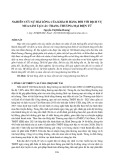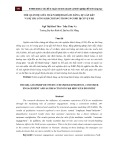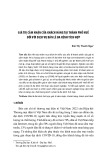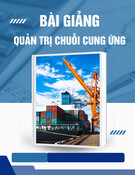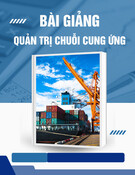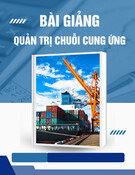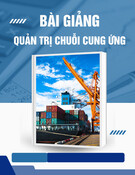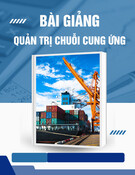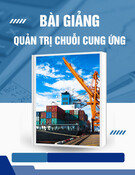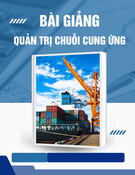
* Corresponding author
E-mail address:norasyikin@uum.edu.my (S.N.B.A. Hamid)
© 2019 by the authors; licensee Growing Science, Canada
doi: 10.5267/j.uscm.2018.5.002
Uncertain Supply Chain Management 7 (2019) 63–72
Contents lists available at GrowingScience
Uncertain Supply Chain Management
homepage: www.GrowingScience.com/uscm
The contributing factors towards e-logistic customer satisfaction: a mediating role of information
technology
Muhammad Imran
a
, Siti Norasyikin binti Abdul Hamid
a*
,
Azelin binti Aziz
a
and Waseem-Ul-
Hameed
b
aSchool of Business Management (SBM), Universiti Utara Malaysia, Sintok, Malaysia
bSchool of Economics, Finance & Banking (SEFB), Universiti Utara Malaysia, Sintok, Malaysia
C H R O N I C L E A B S T R A C T
Article history:
Received March 18, 2018
Accepted May 16 2018
Available online
May 18 2018
In this era of industrialization, there is an increase rate of e-logistic services, which has raised
the necessity to pay more attention on e-logistic customer satisfaction. E-logistic services
spread so rapidly worldwide which overlook the significant segment of customer satisfaction.
Therefore, the prime objective of the current research study is to develop a comprehensive
framework for e-logistics customer satisfaction. Various studies highlighted the area of e-
logistic customer satisfaction, however, in a rare case, literature formally documented the
problem of e-logistic customer satisfaction. Hence, less attention has been paid to the aspect of
customer satisfaction in e-logistic. To address this gap, four hypotheses are proposed
concerning the relationship of low distribution charges (LDC), low transit time (LTT), effective
payment method (EPM), information technology (IT) and e-logistic customer satisfaction. An
e-mail survey was preferred, and questionnaires were distributed by using simple random
sampling technique. The three hundred (300) questionnaires were distributed among the e-
logistic users. The results of the current study found that low distribution charges, low transit
time, effective payment method and information technology had a positive significant
relationship with e-logistic customer satisfaction. Furthermore, information technology found
main contributory element between effective payment method and e-logistic customer
satisfaction. This study is contributing to the body of knowledge by developing a
comprehensive framework to solve various e-logistic problems. Hence, the current study is
helpful for e-logistic companies to mitigate e-logistic customer satisfaction problems.
ensee Growin
g
Science, Canada
by
the authors; lic9© 201
Keywords:
Low distribution charges
Low transit time
Effective payment method
Information technology
E-logistic customer satisfaction
1. Introduction
Electronic commerce (e-commerce) is no longer a new phenomenon in developing countries including
Pakistan. However, the penetration and growth of e-commerce are still very low (Shed Khan &
Bawden, 2005). Based on this issue, the electronic logistic (e-logistic) services in Pakistan is facing
crucial challenges. As, e-commerce and logistics show different grounding paths across different
regions with diversified built environments (Xiao et al., 2017). These challenges negatively impact on
e-logistic performance. Since Pakistani’s e-commerce market is more volatile, thus, a logistic industry
facing numerous problems (Shamsi & Syed, 2015).








